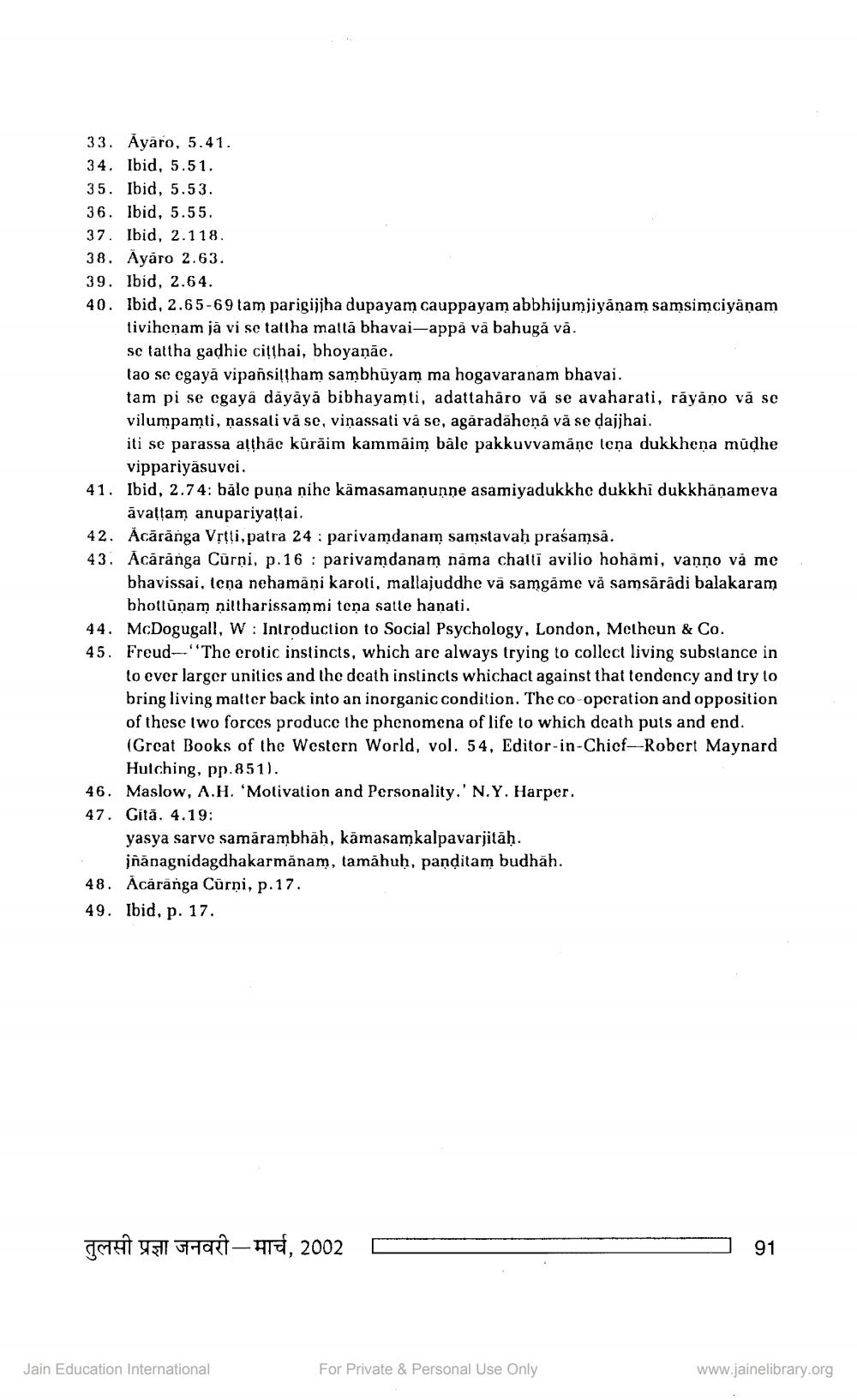________________
33. Ayaro, 5.41.
34. Ibid, 5.51.
35. Ibid, 5.53.
36. Ibid, 5.55.
37. Ibid, 2.118.
38. Ayaro 2.63.
39. Ibid, 2.64.
40. Ibid, 2.65-69 tam parigijjha dupayam cauppayam abbhijumjiyānam samsimciyānam tivihenam já vi se tattha matta bhavai-appà va bahugā vā.
se tattha gadhie citthai, bhoyaṇāc.
tao se cgaya vipañsiṭṭham sambhūyam ma hogavaranam bhavai.
tam pi se cgaya dayāyā bibhayamti, adattahāro vă se avaharati, rāyāno vă se vilumpamti, passati va se, viņassati vá se, agaradahena va se dajjhai.
iti se parassa aṭṭhāc kūrāim kammāim bāle pakkuvvamāņe teṇa dukkheņa mūḍhe vippariyāsuvei.
41. Ibid, 2.74: bale puna nihe kämasamaṇuņne asamiyadukkhe dukkhi dukkhāṇameva āvaṭṭam anupariyaṭṭai.
42. Acārānga Vṛtti, patra 24: parivamdanam samstavah prasamsa.
43. Acaranga Cūrni, p.16 parivamdanam nāma chattī avilio hohāmi, vaṇņo vă me bhavissai, tena nehamāņi karoti, mallajuddhe vā samgame vä samsarādi balakaram bhottunam niltharissammi tena satte hanati.
44. McDogugall, W: Introduction to Social Psychology, London, Metheun & Co. 45. Freud-The erotic instincts, which are always trying to collect living substance in
to ever larger unitics and the death instincts whichact against that tendency and try to bring living matter back into an inorganic condition. The co-operation and opposition of these two forces produce the phenomena of life to which death puts and end. (Great Books of the Western World, vol. 54, Editor-in-Chief-Robert Maynard Hutching, pp.851).
46. Maslow, A.H. 'Motivation and Personality.' N. Y. Harper.
47. Gită. 4.19:
yasya sarve samārambhāḥ, kāmasamkalpavarjitāḥ.
jñānagnidagdhakarmanam, tamähuḥ, panditam budhah. 48. Acäränga Cürni, p.17. 49. Ibid, p. 17.
तुलसी प्रज्ञा जनवरी-मार्च, 2002
Jain Education International
For Private & Personal Use Only
91
www.jainelibrary.org




